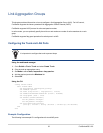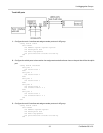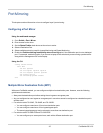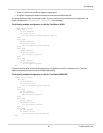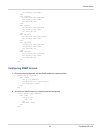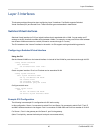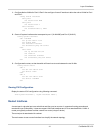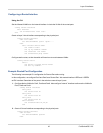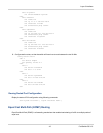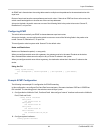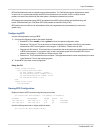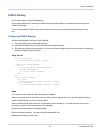
Layer 3 Interfaces
Layer 3 Interfaces
This chapter provides information about configuring Layer 3 interfaces. FortiSwitch supports Switched
VirtualInterfaces (SVI) and Routed Ports. These interface types are described in detail below.
Switched VirtualInterfaces
Switched Virtual Interface (or SVI) is a logical interface that is associated with a VLAN. You can assign an IP
address to the SVIinterface to enable routing between VLANs. For example, we may use SVIs to route between
two different VLANs connected to a switch (no need to connect through a L3 router).
The SVIattaches to the “internal" interface in the switch. An SVI supports routing and switching protocols.
Configuring a Switched Virtual Interface
Using the CLI:
Set the Allowed VLAN list on the internal interface. Include all of the VLANs for ports that route through this SVI.
config switch interface
edit internal
set allowed-vlans <vlan list>
end
Create a system interface. Give it an IPsubnet and an associated VLAN.
config system interface
edit <sytem interface name>
set ip <IP address and mask>
set vlanid <vlan>
set interface internal
set allowacess ping ssh telnet
Configure a static route:
config router static
edit 1
set dst <IP subnet and mask>
set device <sytem interface name>
Example SVIConfiguration
The following is an example CLI configurations for SVI static routing.
In this configuration, Server-1 is connected to switch Port1 and Server-2 is connected to switch Port2. Their IP
and MAC address are show in the diagram. Port1 is a member of VLAN 4000 and Port2 is a member of VLAN 2.
For Server-1, Port1 is the gateway and for Server-2, port2 is the gateway.
(Note: For simplicity, assume that both port1 and port are on same switch)
40 FortiSwitchOS-3.2.0



